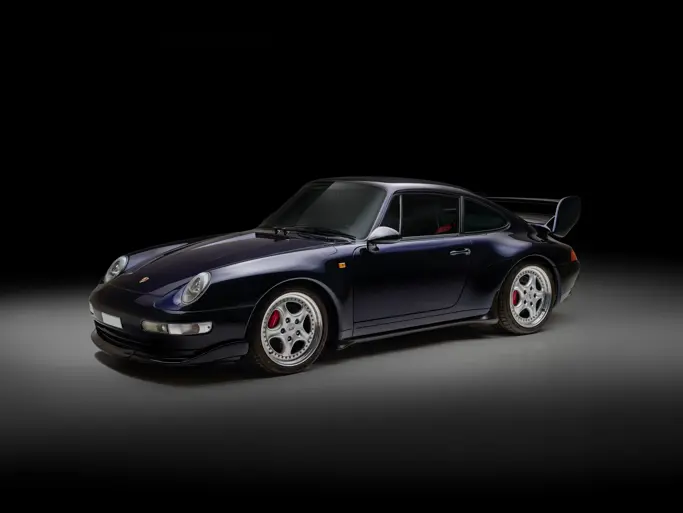 | Fort Lauderdale, Florida
| Fort Lauderdale, Florida

1991 Ferrari Testarossa
{{lr.item.text}}
$86,900 USD | Sold
{{bidding.lot.reserveStatusFormatted}}
- 4,942-cc, 380-hp horizontally opposed 12-cylinder engine
- Five-speed manual gearbox
- Famous Pininfarina styling
- Impressive performance & styling
- Conveniences such as air conditioning
- Power windows & mirrors
- Toolkit & books
- Only a reported 7,177 built from 1984-1991
- Final year of Testarossa availabilty
The redhead from Maranello makes going fast look easy. When Car & Driver magazine conducted a multi-car test at the 7.5-mile oval at the Transportation Research Center of Ohio, they wrote of the Ferrari, “Going 173-mph in the Testarossa on the TRC oval was so simple, your Aunt Jane could have done it.” Another follow-up comment was, “The drivetrain felt as if it could have maintained the Testarossa's top speed forever.” In normal road use the Testarossa continued to impress; “Half of the cars in this test were so noisy we couldn’t hear ourselves think in them, but the Testarossa’s engine was turbine smooth, its cabin refreshingly quiet.” Car & Driver summed it up with; “You could drive a Testarossa to the office every day, and that amounts to a very big compliment for an automobile that is capable of flying on the ground.”
The Ferrari Testarossa leapt to the forefront of the automotive world in 1984 and remained there for 11 years as the world’s fastest production car. It was the definition of ’supercar’ in its era, the state-of-the-art yardstick against which all contemporary sports cars were assessed, as the Testarossa model was in the spotlight from regular appearances on television and the silver screen. The result of Pininfarina’s labors was easily the most recognizable and influential car of its time. The Testarossa is unmistakable at any distance, and impossible to ignore with impressive styling and equally impressive performance standards.
Pininfarina engineered the Testarossa to address some of the concerns with the preceding 512 Boxer; it was wider, marginally taller and longer for improved inside space, and the radiators were moved to the rear to eliminate plumbing that previously ran through the car. The all-important engine air intakes were dramatically extended into the doors with side strakes which stylistically enhanced the Testarossa’s body and actually directed air to two radiators in Formula One design fashion and contributed to making the rear of the car wider and handling more stable. Like many performance and all-out supercars, wind tunnel testing dictated the Testarossa have concealed headlights for improved aerodynamic figures.
The Pininfarina-penned Testarossa improved on the basic mid-engine formula of Ferrari’s Berlinetta Boxer thanks to more horsepower propelling the flat 12-cylinder coupe to a 180-mph top speed. Derived from the Boxer, the 4,942-cc horizontally opposed 12-cylinder engine featured two banks of six horizontally-opposed cylinders and 48 valves. Bosch's latest K-Jetronic fuel injection improved power and drivability; with 380 horsepower on tap, the Testarossa was capable of sprinting to 60-mph in 5.3 seconds. Launched at the 1984 Paris show, the Testarossa was aimed directly at the American market. It was so much better as a road car and more aggressively styled than the preceding Berlinetta Boxer that a remarkable 7,177 Testarossas were built between 1984 and 1991, making it the most successful Ferrari to that date.
The celebrated mid-engine platform also features a five-speed manual gearbox, power-assisted rack-and-pinion steering and power four-wheel vented disc brakes. With an all-business cockpit, this Nero with black leather interior example comes complete with Veglia instrumentation (speedometer in km/h), bucket seating, tilt steering column, concealed (in the glovebox) vanity mirror, rear window defogger, power windows, concealed (in the upper center dash) JVC AM/FM/CD unit, Ferrari logo floor mats, air conditioning and power sideview mirrors. This is all laid out with superb driver-oriented ergonomics in mind. The alloy wheels have the Ferrari name cast into them, and these are fitted with Goodyear Eagle tires as seen in period U.S. advertisements. A factory toolkit is secured in the front compartment of the Ferrari; its owner’s manual and warranty/service book are also onboard.
The 1991 Testarossa was the last year Ferrari produced this model and continual improvements were made during the seven years of production making this final model the best and most desirable of the series.




